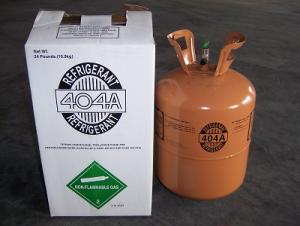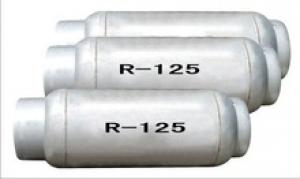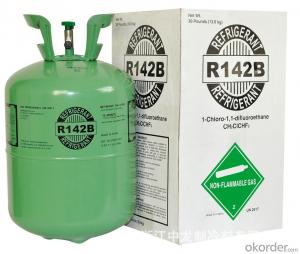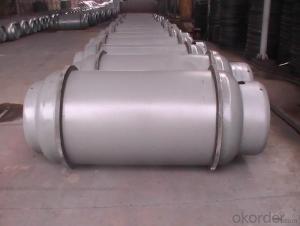R125 Gas in 25LB
- Loading Port:
- Shanghai
- Payment Terms:
- TT OR LC
- Min Order Qty:
- -
- Supply Capability:
- 1000MT m.t./month
OKorder Service Pledge
OKorder Financial Service
You Might Also Like
Specifications
1.OEM is accepted
2.Delivery time:15 days
3.Good service after sale
4.competitive price in this line
Refrigerant, it is an important component of mixed working substance, and can replace R502 and R22. Used as fire-extinguishing agent, can replace Halon1211 and Halon1301.
Property of chloride
Formula: CHF2CF3
Molecular weight: 120.0
B.P.,°C: -48.3
Critical temperature,°C: 66.05
Critical pressure, MPa: 3.59
Critical density, g/cm3: 0.571
Liquid density, 25°C,g/cm3: 1.19
Vaporization heat at B.P., KJ/Kg: 165
ODP(CFC-11=1): 0
QWP(CO2=1): 3500
Quality standard
Appearance: Colorless, no turbid
Odor: Odorless
Purity, ≥%: 99.8
Water, ≤%: 0.001
Acidity, ≤%: 0.0001
Residue on evaporation, ≤%: 0.001
- Q: What is the isomeric structure of oxygen-containing derivatives?
- Play the Transformers. As long as the same molecular formula, you can group out how many different structures, there are a number of isomers.
- Q: What is the difference between an aromatic compound and a hydrocarbon derivative?
- The aromatic compound is a benzene ring containing compound, which may be a hydrocarbon or a hydrocarbon derivative. Hydrocarbons are hydrocarbon-containing compounds, and hydrocarbons containing hydrocarbons other than hydrocarbons are derivatives of hydrocarbons. The two concepts have crossed.
- Q: Simply talk about hydrocarbons
- Hydrocarbons in petroleum are abbreviations of hydrocarbons, which are written in the "water" and "water" in "carbon". Hydrocarbons are classified as saturated hydrocarbons and unsaturated hydrocarbons. Petroleum hydrocarbons are mostly saturated hydrocarbons, and unsaturated hydrocarbons such as ethylene, acetylene, etc., generally only in the oil processing process can be obtained.
- Q: Will AsH3 (arsenic trioxide) is organic or inorganic
- AsH3 (arsine trihydride) is not containing C element
- Q: Sodium can be used to identify derivatives of hydrocarbons
- Sodium can identify hydrocarbon derivatives that are alcohol
- Q: Is the system name of a hydrocarbon derivative named if the question can be named according to the nomenclature of the alkane?
- No, aldehyde is functional group, must be aldehyde for the mother. In addition, when the aldehyde group is a substituent, it is named as a formyl group.
- Q: Organic chemistry studies the performance of hydrocarbons and their derivatives, either right or wrong
- Organic compounds refer to hydrocarbons and their derivatives. Organic chemistry is the study of the structural characteristics of organic compounds, synthetic methods and physical and chemical properties of the chemical.
- Q: What cells are composed of compounds
- Protein and water
- Q: What is the aromatic hydrocarbon .. what is the derivative of the aromatic hydrocarbon
- Aromatic hydrocarbons referred to as "aromatic hydrocarbons", refers to the molecule containing benzene ring structure of the hydrocarbons. Is a closed chain.
- Q: NH4HCO3 and so have C atoms ah, why still inorganic
- Not all carbon compounds are organic compounds, CO, CO2, carbonic acid, carbonates (including salt and acid salts), metal carbides, cyanides, thiocyanates are inorganic compounds.
Send your message to us
R125 Gas in 25LB
- Loading Port:
- Shanghai
- Payment Terms:
- TT OR LC
- Min Order Qty:
- -
- Supply Capability:
- 1000MT m.t./month
OKorder Service Pledge
OKorder Financial Service
Similar products
Hot products
Hot Searches
Related keywords























